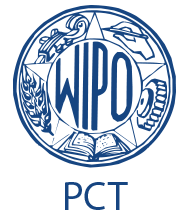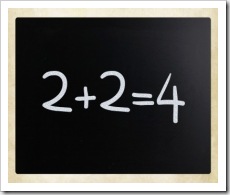In this blog post, Kanchan Yadav, a student at South Calcutta Law College and pursuing a Diploma in Entrepreneurship Administration and Business Laws by NUJS, writes about the different kinds of patents that can be filed depending on the requirement of the patentee.
There are multiple types of Patent Applications that can be filed depending on the situation. Convention application alludes to a patent application documented as per the terms of a worldwide patent arrangement like the Patent Cooperation Treaty. The Patent Cooperation Treaty is a global assertion for documenting patent applications. It secures a designer of a part nation by guaranteeing the need for his/her developments over all or any innovator from non-member nations. However, some other types of applications are discussed below –
-
Ordinary Application:
The principal application for patent documented in the Patent Office without guaranteeing need from any application or with no reference to whatever another application under the procedure in the Patent Office is called a customary application.
-
PCT – International Application:
The Patent Cooperation Treaty or PCT is a universal understanding for documenting patent applications. Notwithstanding, there is nothing called as a ‘world patent.’
The PCT application does not accommodate the award of a universal patent; it just gives a streamlined procedure to the patent application process in numerous nations in the meantime.
-
National Phase Application under PCT:
The PCT-national stage must take after the worldwide stage. The candidate should independently ‘go into the national stage.’ i.e. record a national stage application in every province he wishes to enter. The candidate can enter the national stage in up to 138 nations inside 30-31 months (relies on upon the laws of the assigned nations) from the universal documenting date or need date (whichever is prior). On the off chance that the candidate does not enter the national stage inside the endorsed time restraint, the International Application loses its impact in the assigned or chose States.
-
Patent of Addition:
Patent of addition is an application made for a patent in admiration of any change or alteration of a development portrayed or revealed in the complete detail effectively connected for or has a patent.
Keeping in mind the end goal to be patentable, a change ought to be something more than an insignificant workshop change and should freely fulfil the trial of development. The real advantage is the exclusion of re-establishment expense insofar as the principle patent is restored. A patent of expansion breaches with the discontinuance of the fundamental patent.
-
Divisional Application:
A divisional application is one which has been “isolated” from a current application. The candidate, whenever before the award of a patent can document a further application, on the off chance that he so wants or if a protest is raised by the inspector on the ground that the cases unveiled in the complete particular identifies with more than one development. A divisional application can just contain topic in the application from which it is separated (its guardian), however, holds the recording and need the date of that guardian. A divisional application is valuable if solidarity of development complaint is issued, in which case the second creation can be ensured as a divisional application. Patent of expansion is an application made for a patent in admiration of any change or alteration of an innovation depicted or uncovered in the complete determination effectively connected for or has a patent.
However, coming back to Conventional Application, any nation, which is a signatory or party or a gathering of nations, union of nations or between administrative associations which are signatories or gatherings to a global, provincial or bi-lateral bargain, tradition or game plan to which India is additionally a signatory or gathering and which stands to the candidates for licenses in India or to natives of India comparable benefits as are allowed to their own residents or subjects to their part nations in appreciation of the stipend of licenses and security of patent rights should be a tradition nation or tradition nations for the reasons for this Act.
At present, India is a member of WTO and a part nation in the Paris Convention and a contracting state to the PCT. Any nation, union of nations or between legislative associations which are individuals/contracting states to the above tradition/arrangement/understanding are tradition nations for the motivations behind the Act.
Where a man has made an Application for a Patent in admiration of a creation in a Convention nation (essential application), and that individual or the legitimate delegate or appointee of that individual makes an application under this Act for a patent inside twelve months after the date on which the fundamental application was made, the need date of a case of the complete detail, being a case in view of matter unveiled in the essential application, is the date of making of the essential application. Where applications have been made for comparative security in appreciation of creation in two or more tradition nations, the time of twelve months alluded to in this sub-segment might be figured from the date on which the prior or most punctual of the said applications was made.
Where applications for assurance have been made in one or more tradition nations in admiration of two or more innovations which are related or of which one is a change of another, a solitary tradition application might be made in appreciation of those developments whenever inside twelve months from the date of the most punctual of the said applications for insurance. In any case, the charge payable in respect of such application might be the same as though separate applications have been made in respect of each of the said creations.
Every convention application shall –
- a)be accompanied by a complete specification;
- b)an abstract;
- c)specify the date on which and the convention country in which, the application for protection, or as the case may be, the first of such applications was made; and
- d)state that no application for protection in respect of the invention had been made in a convention country before that date by the applicant or by any person from whom he derives title.
- e)a complete specification filed with a convention application may include claims in respect of developments or, additions to, the invention in respect of which the application for protection was made in a Convention country.
- f)If the Controller requires, a certified copy of the priority document has to be filed within 3 months from the date of communication by the Controller, of such requirement. If the priority document is in a language other than English, a verified English translation shall be submitted.
Whenever two or more applications for patents constituting one innovation have been made in one or more tradition nations, one application might be made inside twelve months from the date on which the prior or most punctual of those applications was made. The term of the patent of a traditional application should be twenty years the date of documenting of the Application in India. A Convention Application can be isolated, and the partitioned Application should have the same priority date. The priority date of a case is the date on which the matter was initially revealed in a patent application.
 Serato DJ Crack 2025Serato DJ PRO Crack
Serato DJ Crack 2025Serato DJ PRO Crack













 Allow notifications
Allow notifications



